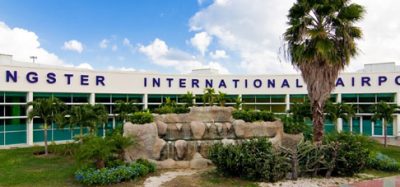The importance of good communications
- Like
- Digg
- Del
- Tumblr
- VKontakte
- Buffer
- Love This
- Odnoklassniki
- Meneame
- Blogger
- Amazon
- Yahoo Mail
- Gmail
- AOL
- Newsvine
- HackerNews
- Evernote
- MySpace
- Mail.ru
- Viadeo
- Line
- Comments
- Yummly
- SMS
- Viber
- Telegram
- Subscribe
- Skype
- Facebook Messenger
- Kakao
- LiveJournal
- Yammer
- Edgar
- Fintel
- Mix
- Instapaper
- Copy Link
Posted: 3 December 2008 | Gill Galway, Policy and Strategy Specialist, UK CAA | No comments yet
Even at the world’s smaller airports, the airside environment can be a challenging place to work. For an airside driver the task of completing your duties safely, complying with safety instructions and restrictions, and maintaining a watchful eye on aircraft and other vehicles on the manoeuvring area can be particularly daunting.
Even at the world’s smaller airports, the airside environment can be a challenging place to work. For an airside driver the task of completing your duties safely, complying with safety instructions and restrictions, and maintaining a watchful eye on aircraft and other vehicles on the manoeuvring area can be particularly daunting.
An airside driver could be operating a tug responsible for towing tonnes of aircraft, worth millions of pounds, around and in-between similarly valuable and sizeable aircraft. Equally he could be an operations driver checking the runway surface and lighting, or driving a fire and rescue vehicle responding to an emergency and preparing himself for what that might bring.
Airside drivers are trained to be aware of the potential dangers of driving a relatively small vehicle behind or in front of a jet engine or in close proximity to an aircraft such as a Boeing 747, which at its highest point is nearly 20 metres tall. However, some of the biggest risks can occur in situations that do not involve operating close to an aircraft and that may appear straightforward or routine. In 2007 there were 228 runway incursions, when an aircraft or a vehicle entered an active runway without permission. Of those occurrences, over 20% happened due to airside drivers failing to follow procedures.
Examples in the UK include a bird-scaring vehicle that entered the runway after the correct ATC procedures had not been followed. This resulted in an approaching aircraft having to go around. At another airport, a vehicle entered the runway without clearance after an aircraft had commenced its take-off roll.
A key factor in preventing any incident, including a runway incursion, is good communication. Pilots and air traffic controllers, the other key players in operations on the manoeuvring area, use radio communications constantly throughout their working day, and radio procedures form an integral part of their training and licence qualifications.
Radio communication with controllers is less of a day-to-day task for the airside driver, but is still vitally important in maintaining awareness of what is going on around the driver and for seeking permission to enter or cross active taxiways or runways.
With the increasing number of movements that take place today, the radio frequencies at airports, including some of the smaller ones, can be extremely busy with pilots and controllers in almost constant communication. There are occasions when a driver, less experienced in using the radio, will have to pass on information or seek a clearance from ATC using these congested frequencies.
If the radio messages used are ambiguous or use non-standard phraseology then they can lead to incidents and accidents, and have done so.
At a UK airport a vehicle at one holding point was given permission to cross, but the occupants of another vehicle at a different holding point mistook this as a call for them and crossed the active runway. Issues can also occur away from runways and taxiways as another incident demonstrates – a Boeing 767 was pushed back the wrong way by a tug to face east rather than west. The flight crew were unable to contact the tug operators, who were not wearing headsets.
Recognising the important role that drivers play, the UK Civil Aviation Authority (CAA) has included airside drivers in its runway incursion work since the project commenced. The latest outcome of the work is a new easy-to-use quick reference guide on radiotelephony (RTF) phraseology for airside drivers. The guide is a supplement to the official CAA Radiotelephony Manual, CAP 413, and provides information in a much more user-friendly style.
It covers the whole range of radio communications that a driver would need to make, regardless of their situation or role, and includes sections on entering and crossing runways; towing an aircraft; adverse weather; and movement around the airfield.
The guide is available both as a small printed booklet, that could be carried by a driver during the working day, and online as an interactive version. Both versions provide examples and scenarios with the correct phraseology to be used by drivers in the day-to-day situations they will encounter when on the manoeuvring area.
Drivers use active taxiways and often need to access and cross active runways. It is vitally important that they understand and use the correct radio calls to gain permission from air traffic services in order to enter these operational areas, which are used by aircraft that in many cases are travelling at high speed. Ambiguous RTF can lead to misunderstandings and serious safety incidents, such as runway incursions.
Drivers may find the online PDF version particularly useful as a training aid as it includes captured audio of the examples used, which enables anyone viewing the document to actually hear the phraseology at the same time as viewing the document.
Copies of the guide are being distributed to licensed airports, aerodromes and ground handling organisations throughout the UK, while the online version can be accessed on the CAA website at http://www.caa.co.uk/application.aspx?catid=33&pagetype=65&appid=11&mode= detail&id=3304
While the booklet covers the majority of issues that an airside driver will face, there will always be issues outside this range that cannot be covered in a guide. In these cases common sense and the shortest, clearest form of message is best.
Airside safety is the responsibility of all those working in that environment and airside drivers bear as much of that responsibility as pilots and air traffic controllers. It is therefore vital that they are correctly trained and briefed on all aspects of their tasks and that includes the use of the radio. The new guide will help with this task as an aid to existing training and best practice, as outlined for UK airports in the CAA’s CAP 642 publication, dealing with Airside Safety Management.


















